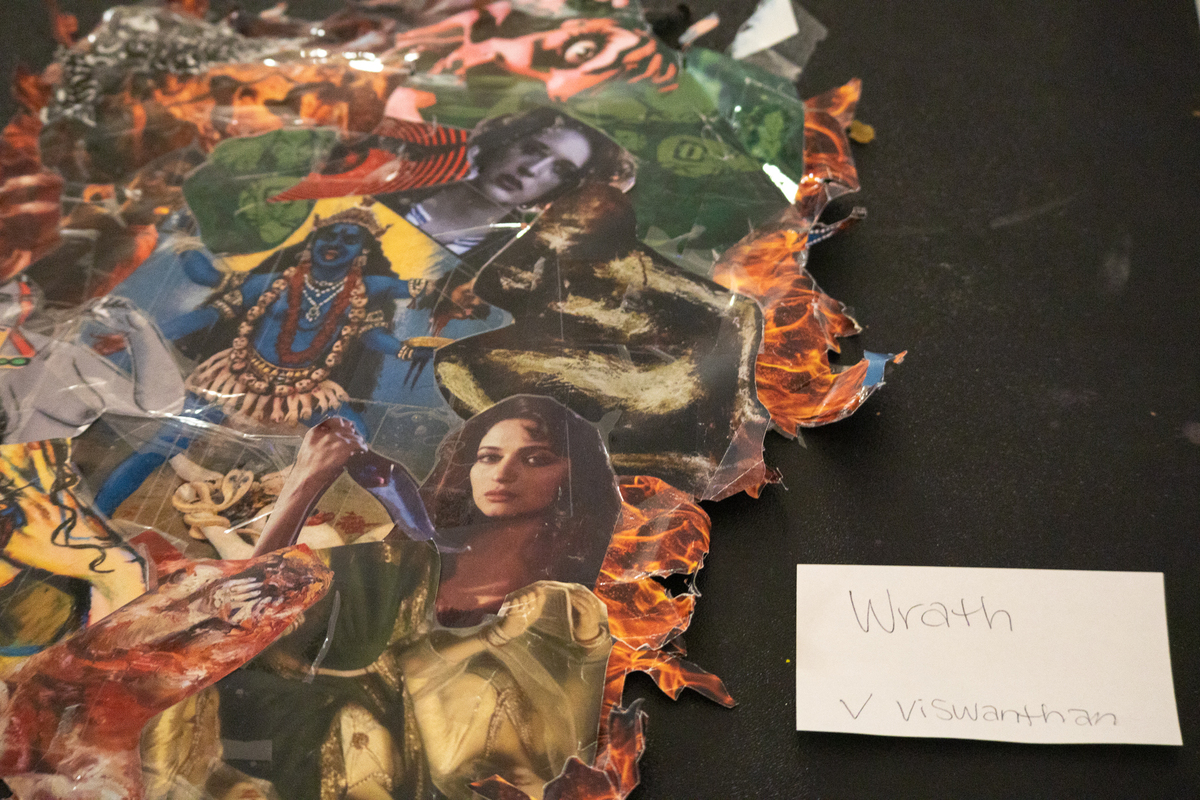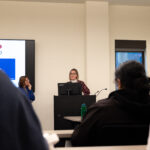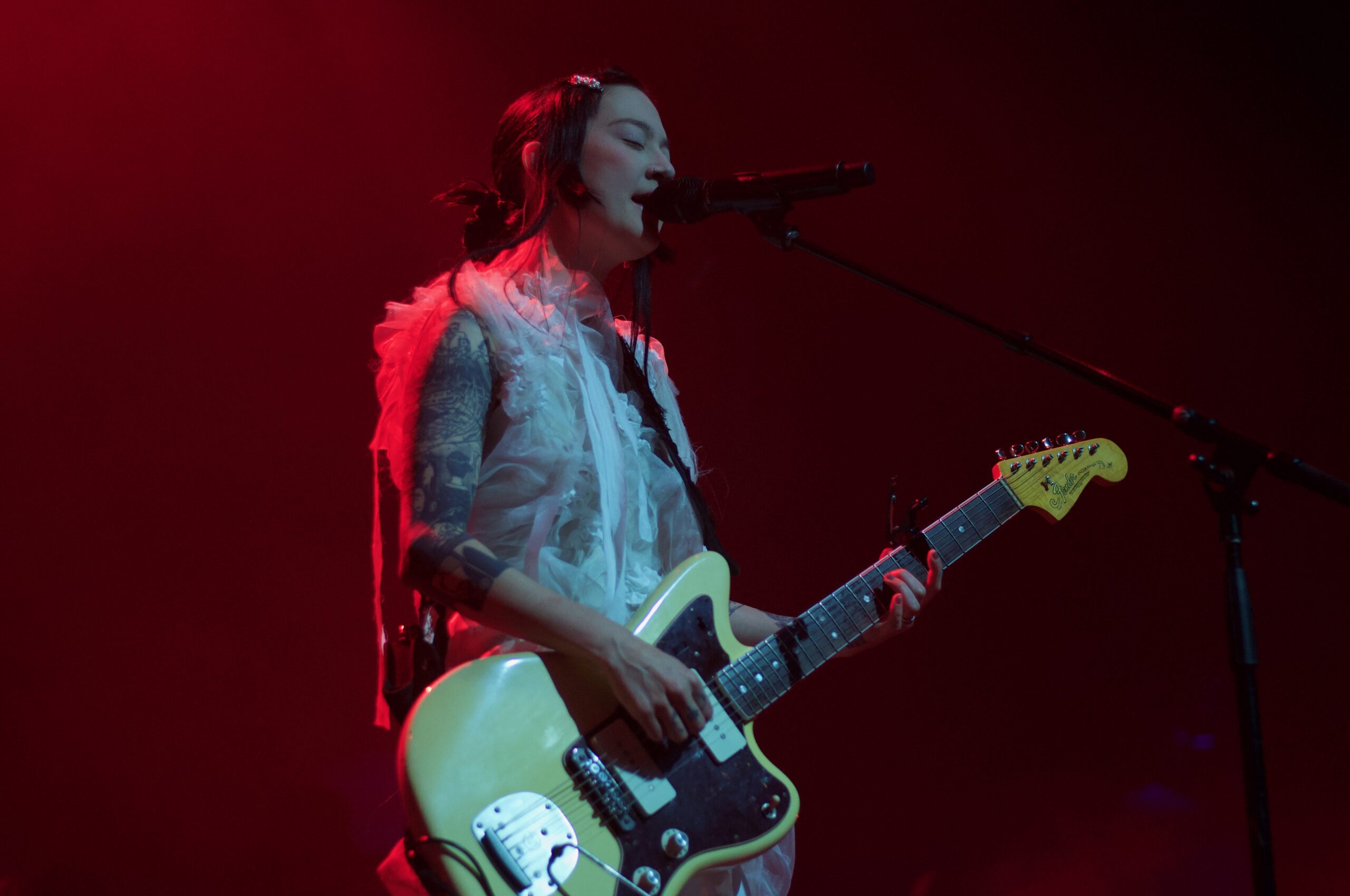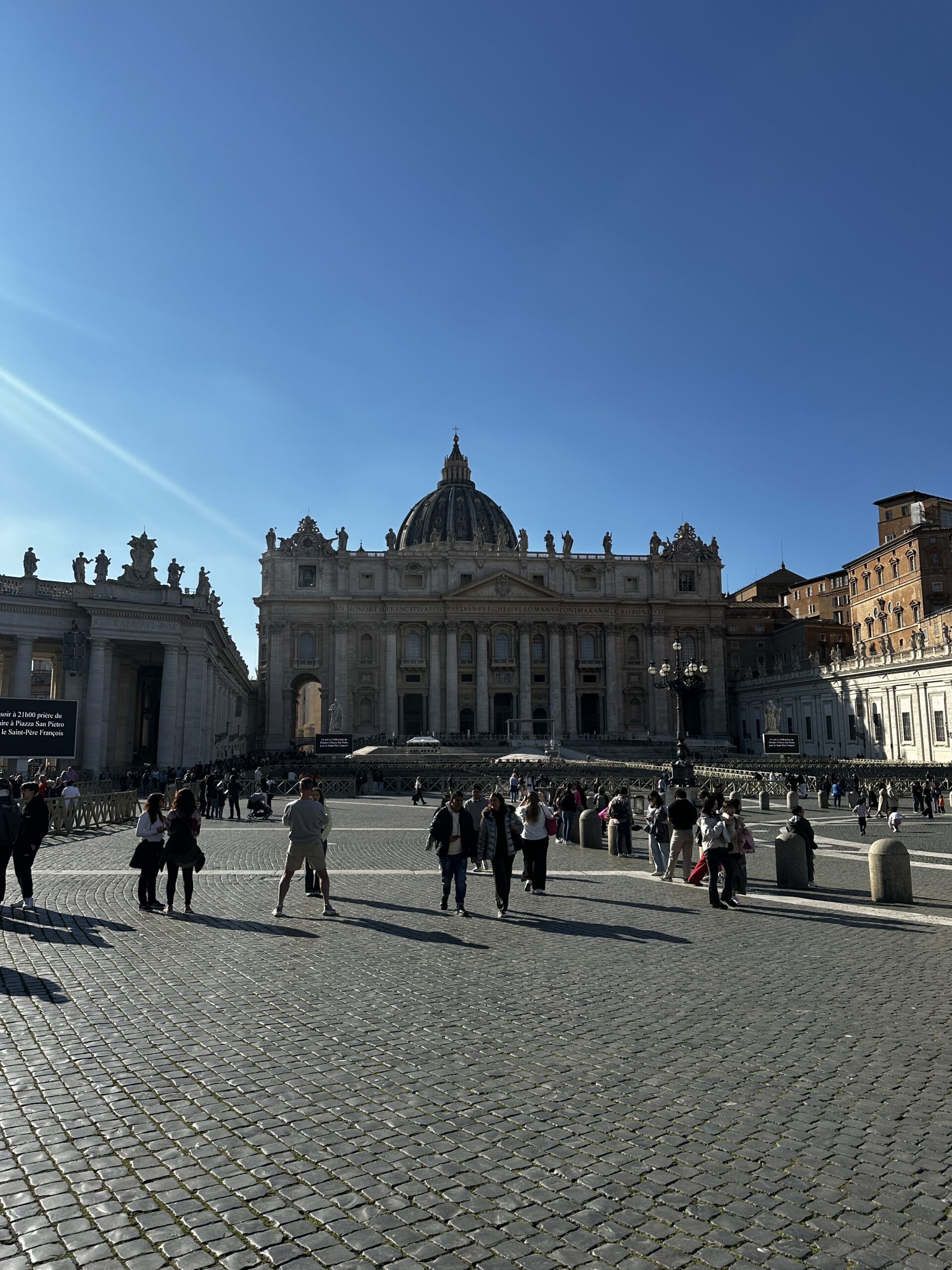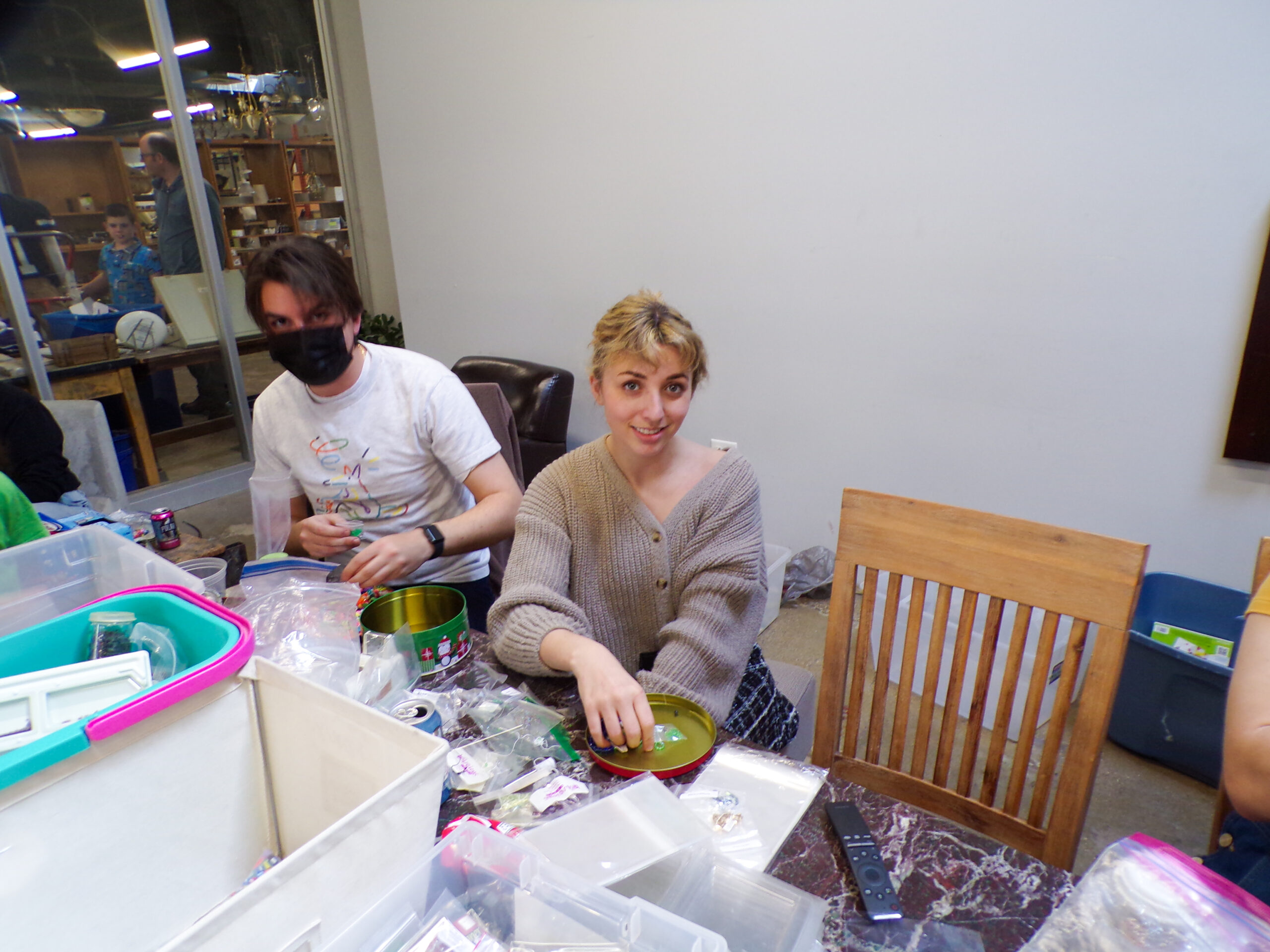Diminuendo Magazine hosted a gallery event, giving students a space to share their visual and poetic art.
The glossy pages of Diminuendo Magazine sit in modest, wire newsstands across campus, hidden in plain sight.
The student-run magazine — which publishes once a semester — fuses literary and visual media, including poems, photography and graphic illustrations. Diminuendo’s co-president Adrian Ackert said highlighting student works was the driving force behind the group’s first art gallery showing March 15. Gallery submissions were open to all students, including non-club members.
Previously, the group has hosted poetry nights, The Phoenix previously reported. The art gallery was a combination of the poetry event, allotting time for students to read their literary works.
Despite their efforts, low turnout with about 10 non-club members prompted the group to close the display an hour early. Ackert said she attributed this to the holiday weekend and lack of outreach to the English and the arts departments.
Co-president Evangelos Stavrou said one of the only interests he has maintained from childhood is creative writing. As a biology major, he said STEM and art aren’t mutually exclusive — Stavrou finds art to be not only a break from his studies but an extension of his scientific knowledge.
“You can make those parts connect,” Stavrou said. “I think there’s something really poetic about the way the world works.”
Ackert said she hoped the gallery would help encourage students to submit their visual art projects since the magazine tends to receive more literary submissions. She said she attributes the low number of visual art submissions to the magazine’s difficulty communicating with the Fine Arts Department.
Noritaka Minami, the Director of Fine Arts, wrote in an email to The Phoenix that he is unaware of resistance within the department. Minami said he believes the department can share opportunities within the magazine if the information is provided to communication staff.
Studio art minor and Diminuendo treasurer Meg Levesque said she is admittedly guilty of not submitting visual art to the magazine.
“I’ll submit literary pieces, but my visual art pieces I get pretty self-conscious about,” Levesque said. “I think the more time you spend with a piece the less good you feel about it. It’s a weird thing.”
Without the pressure of her art being put into print, Levesque said she was looking forward to using the gallery as an opportunity to show off many of her photography projects.
With double-exposed film, digital photos and collage work, Levesque’s work took up nearly half of the gallery space. Levesque said they prefer to experiment with a variety of mediums, capturing a sense of safety and freedom — a recurring theme in their work.
An accidental photobomb resulted in “Bliss” — a digital photo of a young girl running across a beach. Levesque said this is one of her favorite pieces because she was able to capture a “perfect moment” of childlike wonder and curiosity.
Photography took the forefront at the gallery as Joseph Kosman lined the walls with black and white film series titled “советская женщина,” which translates to “Soviet woman.”
The political science major said the gallery was their first experience with Diminuendo since they previously didn’t know of the magazine’s existence. Kosman said they decided to share some of their art after receiving encouragement from a Diminuendo e-board member.
His film series depicts a subject in drag as they pour a glass of red wine. Each photo displays a stage into the ultimate descent of the subject pouring the wine onto themself.
Kosman said his goal was to provide commentary on his Soviet heritage and the loss of Soviet culture he feels due to not living in the country and spending part of his childhood in China.
Evangelos Stavrou, co-president of Diminuendo, said the limited publication of the magazine is the result of time and low funding. Stavrou said he holds the university responsible for the club’s limited funds since Loyola required Diminuendo to switch from Fisheye Graphics to Warehouse Direct last year.
Stavrou said the change in printing companies resulted in increased production costs. He said Warehouse Direct charged $3,900 for 700 magazines in fall 2023 and Fisheye Graphic charged $2,800 for 600 magazines in fall 2022.
Neither publication responded to The Phoenix request on March 18 for comment on the change of printers and price differences.
The fourth-year student said he believes this switch was made because of Loyola’s personal financial interest instead of giving back to students and supporting the arts.
“I think the heads at Loyola are kind of corrupt and really focused on their own monetary gain,” Stavrou said. “The Loyola CEOs and boards of directors, they don’t always have the students’ best interests in mind and a lot of times we bear the brunt of that.”
Matthew McDermott, associate director of external communications, said Warehouse Direct is Loyola’s pre-qualified supplier and is expected to bring “increased efficiency and quality to the University,” McDermott wrote in an email to The Phoenix.
“Loyola University Chicago negotiates the best price and service agreements for specific goods and formulates the relationship with certain suppliers,” McDermott wrote.
McDermott said these pre-qualified suppliers have familiarity with Loyola’s purchasing policies, making it easier to work with the supplier.
Diminuendo Magazine accepts submissions from all Loyola students on a rolling basis. Submissions are accepted into the magazine by an anonymous general body vote.
Featured image by Allison Treanor / The Phoenix
-

Bri Guntz is a third-year student majoring in multimedia journalism and music. Since joining The Phoenix in her second-year, she’s contributed to multiple sections, with a focus on arts. Bri enjoys writing feature articles to capture the essence of Rogers Park. When not writing, she can be found petting cats, hiking or watering one of her numerous plants
View all posts

